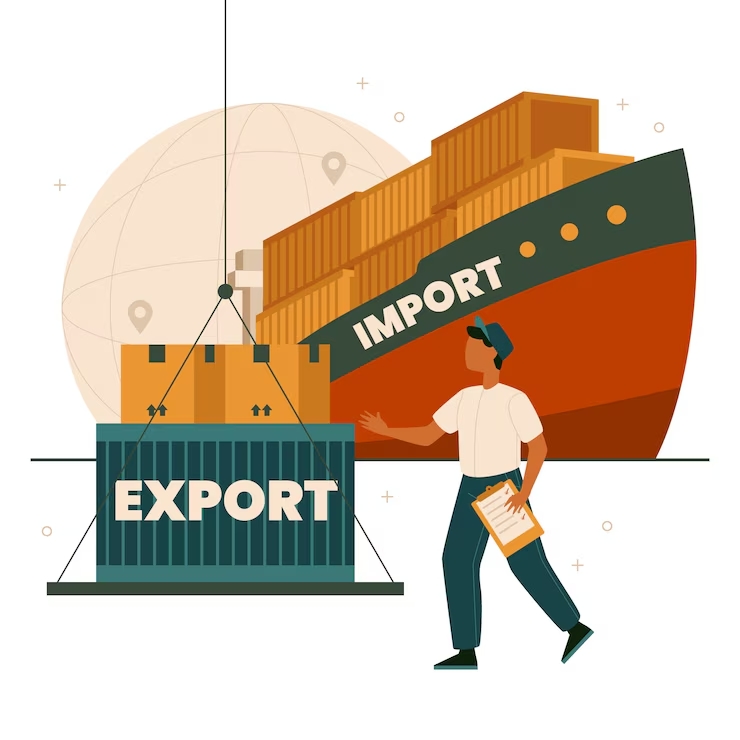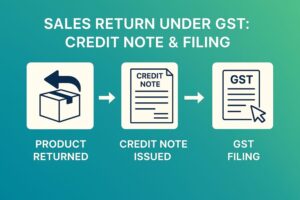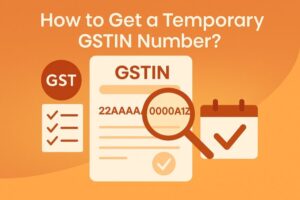Export with Payment of Tax under GST : Read Now
- 9 Aug 24
- 14 mins

Export with Payment of Tax under GST : Read Now
Key Takeaways
- Exporters have options to export without GST via LUT/Bond or with IGST payment, both of which are eligible for refunds.
- A GSTIN is vital for exporters for Input Tax Credit claims and GST compliance.
- Proper export documentation is crucial for smooth customs clearance and refunds.
- The choice between LUT/Bond and IGST depends on financial status and export activity.
- Correct GST documentation is key to efficient customs clearance.
- Exporters can enhance cash flow by claiming IGST refunds or input tax credits.
In the ever-evolving outlook of global trade, knowing the intricacies of export under the Goods and Services Tax (GST) regime is important for businesses aiming to expand beyond domestic borders. With the implementation of GST, exporting goods and services has become more streamlined, yet it demands a clear comprehension of tax obligations and refund mechanisms.
Pice, a leading business payments and credit line company, offers this comprehensive guide to help exporters navigate the GST framework efficiently.
What is GST Export?

Exporting goods or services under the Goods and Services Tax (GST) regime in India is considered an 'inter-state supply' and is subject to GST. However, exports are treated as zero-rated supplies, which means that goods or services exported are taxed at a rate of 0%, but the exporter has the option to claim a refund for the input tax credit (ITC) on the inputs used to produce those exported goods or services.
There are two types of export options available for exporters under GST:
- Export without Payment of GST (Under Bond or Letter of Undertaking): Exporters can export goods or services without paying GST by furnishing a bond or Letter of Undertaking (LUT) in FORM GST RFD-11. This option allows exporters to export goods or services without paying IGST (Integrated Goods and Services Tax) at the time of trade, and they can claim a refund of the input tax credit (ITC) that was used in the production of exported goods or in providing services for export.
- Export with Payment of GST (With Payment of IGST): Exporters can choose to pay IGST on exported goods and then claim a refund of the IGST paid on the goods that have been exported. This option might be beneficial in cases where the exporter wants to utilize the cash flow or where the ITC is not sufficient to cover the GST on inputs.
Export with Payment of Tax Under GST
Exporting under the Goods and Services Tax (GST) framework in India offers businesses the flexibility to operate within a system that not only promotes global trade but also ensures a seamless flow of tax credits.
A significant aspect of this framework is the choice exporters have between exporting goods and services without payment of tax, by furnishing a Letter of Undertaking (LUT) or a bond, and exporting with payment of Integrated Goods and Services Tax (IGST), which can later be claimed as a refund.
It is important for organizations to know the variations of each option since they have an influence on cash flow, tax liabilities, and compliance duties.
Choosing Between LUT/Bond and IGST Payment
The decision between opting for an LUT or bond and paying IGST upfront is pivotal and should be made after a thorough analysis of your business's financial health, cash flow projections, and trade volume.
Here’s a breakdown of the criteria you should consider:
Financial Health and Cash Flow
- LUT/Bond: Ideal for businesses seeking to preserve cash flow as it allows exports without any upfront tax payment. Small and medium-sized businesses (SMEs) and startups that might have little operational resources can especially benefit from this.
- IGST Payment: Suitable for businesses with sufficient cash reserves that can afford to wait for the refund process. Paying IGST upfront might be a strategic choice for those looking to utilize the input tax credit efficiently.
Volume and Frequency of Exports
- High Volume and Regular Exports: An LUT/Bond might be more beneficial as it simplifies the process for businesses that export goods or services frequently, eliminating the need to pay tax each time.
- Sporadic Exports: For businesses with fewer frequent trade transactions, paying IGST and claiming refunds could be manageable without significantly affecting their operational cash flow.
Administrative Considerations
- LUT/Bond: Requires adherence to specific conditions and the filing of documentation proving eligibility. The exporter's organizational and compliance skills are put to the test.
- IGST Payment: This involves straightforward tax payment and subsequent refund claims, which might be easier to manage for businesses with robust accounting practices.
Step-by-Step Guide to Exporting Under GST

Exporting under the Goods and Services Tax (GST) regime in India requires meticulous planning and understanding of the legal and procedural frameworks. Here is a detailed step-by-step guide designed to assist businesses in facilitating these processes, making them more manageable and efficient.
Registration and Documentation
Step 1: Securing a GSTIN
The first step for any business looking to export is to obtain a Goods and Services Tax Identification Number (GSTIN), which serves as a primary identifier under the GST regime. It's essential for claiming Input Tax Credit (ITC) and for the documentation process involved in exports.
Step 2 : Preparing Export Invoices and Other Necessary Paperwork
Key Considerations: Preparing accurate and compliant export invoices is crucial. These invoices should include details such as the GSTIN, HSN codes, description of goods, quantity, value, tax charged (if any), and declaration stating that GST has been paid (if applicable).
Step 3 : Choosing Your Tax Payment Route
(Evaluating the Benefits of Exporting Under LUT/Bond vs. IGST Payment)
Decision Making: Exporters have two options: exporting under a Letter of Undertaking (LUT) or Bond without paying IGST, or paying IGST at the time of trade and claiming a refund later. The choice depends on various factors, such as cash flow, tax liability, and administrative convenience.
Step 4 : Shipping and Customs Clearance
Ensuring Compliance with Shipping Regulations
Regulatory Compliance: Adherence to shipping regulations and standards is mandatory. This includes packaging, labeling, and handling requirements specific to the destination country.
Step 5 : Streamlining Customs Clearance with Proper GST Documentation
Customs Requirements: Customs clearance is a critical step in the export process, requiring meticulous documentation, including the GST-paid invoices, shipping bills, and other relevant documents.
Step 6 : Claiming Refund (Procedure for Claiming IGST Refunds)
Refund Process: The hassle-free refund process involves filing the relevant GST returns, submitting proof of export, and ensuring all conditions for GST refund eligibility are met. This process can be complex and time-consuming.
Maximizing Benefits: Input Tax Credit for Exporters
Maximizing the benefits of Input Tax Credit (ITC) can significantly impact the financial health and operational efficiency of exporters operating under the Goods and Services Tax (GST) regime in India. How to leverage ITC (Input Tax Credit) can lead to considerable savings and improve cash flow for businesses engaging in international trade. Here's a summary of how exporters can increase their ITC benefits:.
What is an input tax credit?
The input tax credit allows businesses to deduct the amount of tax paid on inputs from the tax to be paid on output. For exporters, this means that the GST paid on materials, goods, or services used to produce exported goods can be claimed back, effectively reducing the cost of production.
Relevance to Exports: Since exports are zero-rated supplies under GST, exporters can claim refund of the ITC on inputs used for manufacturing the exported goods, thereby not bearing the burden of tax on products sold internationally.
Eligibility Criteria and Claiming Process
Eligibility for ITC
- Criteria: To be eligible for ITC, businesses must ensure that the inputs are used solely for the purpose of exporting goods and services. The goods or services exported should be either subject to IGST or exported under a bond or LUT without payment of IGST.
- Documentation: Proper documentation, including GST-compliant purchase invoices, GST returns, and export documentation, is vital for claiming ITC.
Claiming ITC
- Filing Returns: Businesses need to file monthly GST returns, detailing the inputs purchased and the taxes paid on them. This process is crucial for claiming ITC.
- Refund Procedure: By submitting the appropriate forms and providing export proof, you can request a refund of the ITC on inputs used for exports. The process involves several steps, including the reconciliation of sales and purchase ledgers, which must match the GST returns filed.
A strategic approach to managing ITC can lead to significant cost savings, improved cash flow, and overall financial health for businesses engaged in exporting goods and services.
Dealing with Refunds: A Closer Look

Finding the way for the refund process for exporters who have paid Integrated Goods and Services Tax (IGST) on exports is an essential aspect of managing cash flows and operational costs effectively under the Goods and Services Tax (GST) regime in India. A clear interpretation of the refund procedure, associated timelines, and required documentation can significantly streamline this process.
Detailed Refund Procedure for Exporters Paying IGST
Filing for Refunds
- Export Documentation: Ensure that all exports come with the required export documentation, such as shipping bills and tax invoices, along with a declaration of the IGST paid on exported goods or services.
- GST Return Filing: File the relevant GST returns, particularly GSTR-1, detailing the exported goods or services and the IGST paid. This information should be accurately reflected in the shipping bill.
- Automatic Refund Process: The customs department's shipping bill and the filed GSTR-1 should match in order to start the automatic refund process for IGST on exports.
- Application for Refund: In cases where the refund is not processed automatically, an application for a refund in FORM GST RFD-01 may be required, citing the details of the exports and IGST paid.
Timelines and Documentation
Timelines: The GST law stipulates a standard timeline for the refund process, typically within 60 days from the date of filing the refund application. However, the actual processing time can vary based on documentation accuracy and administrative efficiency.
Required Documentation: Critical documents include the GSTR-1, shipping bills, tax invoices, and proof of realization of export proceeds. Keeping these documents readily available and accurately recorded accelerates the refund process.
In the realm of exporting under the Goods and Services Tax (GST) framework, navigating the procedural and compliance landscape efficiently is crucial for business success. However, even seasoned exporters can encounter pitfalls that impede their operations, financial flow, and compliance status. Recognizing and avoiding these common mistakes can safeguard businesses against unnecessary complications and financial losses.
Overlooking Compliance Details
Key Issues:
- Failing to stay updated with GST regulations, which are subject to changes and updates,.
- Incorrect classification of goods or services under the GST tariff codes leads to the wrong tax rates being applied.
- Delay in filing GST returns or making tax payments, resulting in penalties and interest.
Avoidance Strategy: To avoid such oversights, businesses should invest in regular GST compliance training for their teams and consider subscribing to updates from reliable sources. Utilizing services like Pice, which offers automated compliance monitoring and alerts, can also help businesses stay on top of regulatory requirements and deadlines.
Mismanagement of Export Documentation
Common Mistakes:
- Inaccurate or incomplete export invoices that fail to meet the GST compliance requirements.
- Lack of proper record-keeping for shipping bills, export contracts, and other relevant documents.
- Errors in linking GST returns with export documentation led to delays or rejections of refund claims.
Mitigation Measures: Implementing a robust document management system is vital. Pice’s platform can assist in automating and organizing export documentation, ensuring accuracy and availability when needed. Regular audits of export documents can also help identify and rectify discrepancies early on.
Underutilizing ITC Input Tax Credit Benefits
Issues Encountered:
- Not fully understanding the eligibility criteria for claiming ITC on exports.
- Failing to claim ITC refunds on time impacts the business’s cash flow.
- Incorrectly filing ITC claims leads to rejections or audits by tax authorities.
Optimization Tips: Businesses should thoroughly analyze their eligibility for ITC on inputs related to exported goods and services to simplify the process of calculating, claiming, and tracking ITC refunds.
Forms and Applications
- Refund Application (Form GST RFD-01): A critical step for Indian exporters, especially those paying IGST, is to familiarize themselves with Form GST RFD-01 for refund applications. Ensuring that this form is accurately filled and submitted within the mentioned timeframe is important for a smooth refund process.
- Managing Transactions for Compliance: Maintaining a clear and compliant record of all transactions related to exports is essential. This includes ensuring that all export-related sales are correctly reported in GST returns and that any claim for refunds or ITC is well-documented and justified.
Conclusion
In conclusion, crossing the complexities of the GST framework for exports requires a detailed knowledge of compliance regulations, efficient management of export documentation, and strategic utilization of ITC benefits. Businesses must stay informed and agile, leveraging platforms like Pice to streamline processes, ensure accuracy in documentation, and optimize financial flows.
By adhering to the guidelines and embracing the support tools available, exporters can enhance their global trade endeavors, ensuring compliance and maximizing profitability in the dynamic outlook of international commerce.
💡Don't let your GST payments slow down your export business. Download the Pice GST Payment App now and streamline your export operations!
 By
By 

















